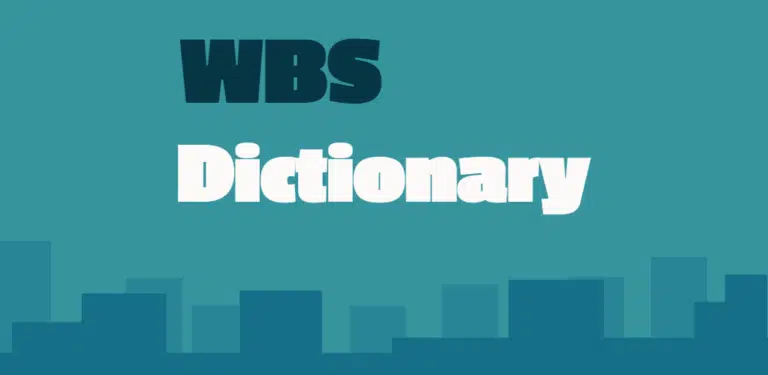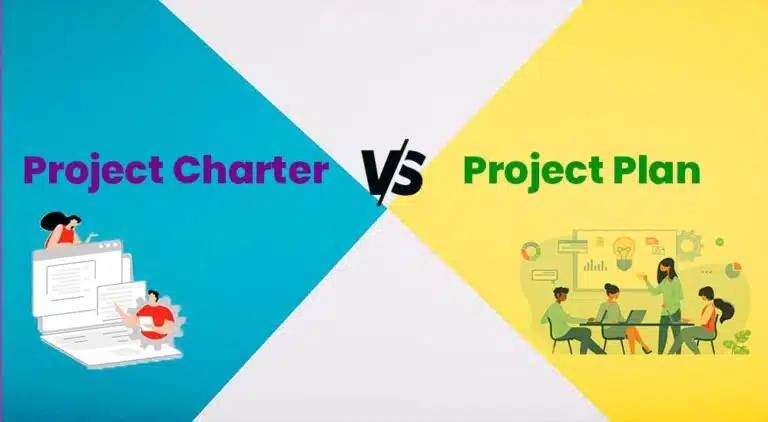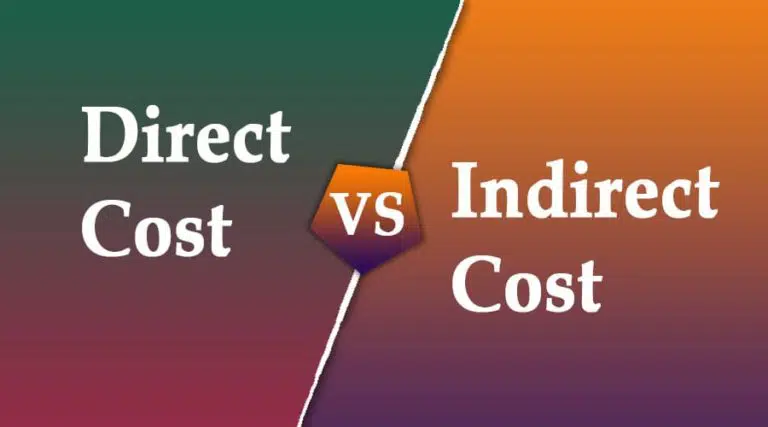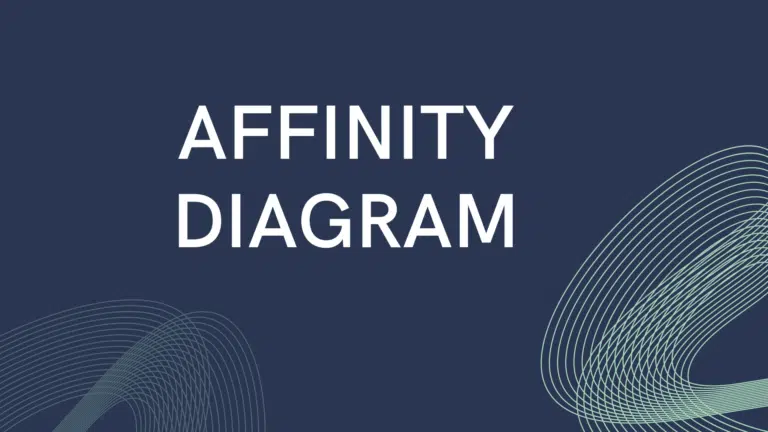To be successful, a project must be finished on schedule and under budget while also satisfying the standards outlined for its scope. To accomplish the goals of this project, it is necessary to perform effective project cost estimation, planning, and control.
Estimating project costs allows you to more accurately establish the total cost of the project, as well as your budget and the cost baseline.
Estimating costs in project management is extremely important, even though many organizations cannot carry it out accurately. As per PMI’s Pulse of the Profession Report, 28% of project deviates due to faulty cost estimates. Though this report is not available on the site, the screenshot can be seen below:
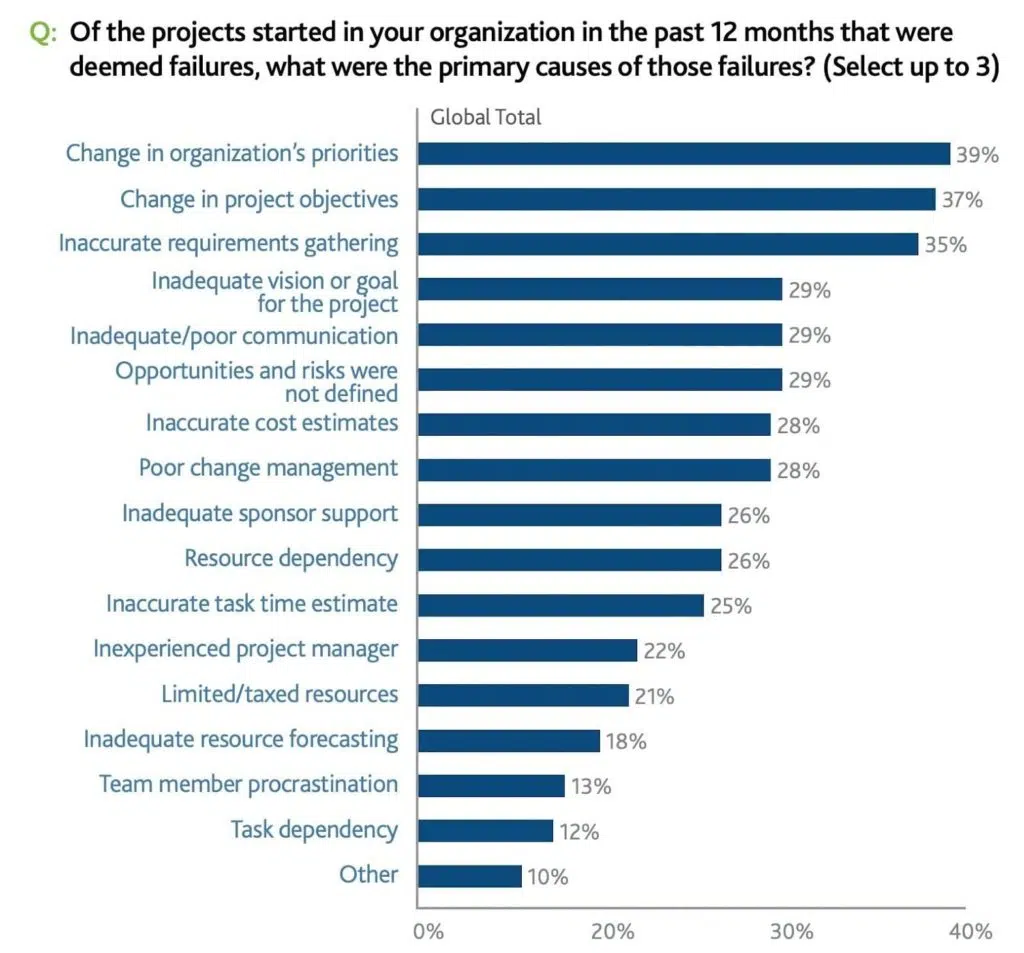
The cost estimation is not difficult; it only requires knowledge of some simple tools and dedication.
Estimating the costs of a project is an important step, and if you make any mistakes in this step, it could result in an inaccurate project budget, which could impact the project’s goals.
Let’s look at a real-world example of an incorrect project estimation before we examine the project’s cost estimation.
A local authority requested proposals for a multi-year contract to build multiple metro train stations. A large number of contractors submitted bids, and the one with the lowest total won the project.
As a result of inaccurate cost estimation, the project’s cost and schedule deviated significantly from the baselines during the execution period. After several years, the distance between them got so great that the project had to be scrapped.
This is just one example of wrong project cost estimations that were not reflective of actual costs. Low data quality, lack of data, or no refinement can all lead to incorrect estimations.
Longer projects can have shifting requirements; you need to factor them in and update the baseline. In the beginning, you might factor assumptions and constraints incorrectly, so you just go back and validate them.
A Few Cases of Erroneous Project Cost Estimating
- In 1914, the Panama Canal ran 23 million USD over budget compared to the 1907 plans.
- In 1995, the Denver International airport opened 16 months late with extra spending of 2.7 billion USD.
- In 1993, the London Stock Exchange abandoned the Taurus Program after more than ten years of development. Taurus was 11 years late and 13,200 percent over budget, with no viable solution.
What went wrong with these cost estimations?
Estimators lacked information and failed to revise costs and schedules as the project progressed.
Proper estimations help determine a project’s feasibility by weighing the benefits against the costs involved.
What is the Project Cost Estimation?
Project cost estimating process estimate the project cost by accurately identifying the scope of work, tasks, duration, and resources required to complete the project.
The creation of a project baseline and the prevention of scope creep in the later stages of the project can both be aided by an accurate project estimation process.
Estimating the costs of a project is not a one-time task. It is an ongoing process that is performed whenever there is any new information available, the scope of the work changes, or any identified risk occurs and affects the project’s goals.
You will be able to improve your estimation and arrive at a more precise number as the project moves forward and the scope becomes more apparent. This feature is known as progressive elaboration.
Project cost estimating techniques can also help find resources, effort, duration, probability, the impact of risks, etc. It can help you analyze:
- Contingency reserve
- Management reserve
- Organizational budget and estimation
- Vendor bid and analysis
- Make or buy analysis
- Risk probability, impact, urgency, and detectability analysis
- Complexity scenario analysis
- Organizational change management analysis
- Capacity and capability demand estimation
- Benefit definition
- Success criteria definitions
- Stakeholder management planning
Estimation can be simplified using project documentation that includes assumptions and constraints, risks, levels of information, ranges, and confidence levels. The information that is readily available to you on market dynamics, stakeholders, rules, organizational capabilities, risk exposure, and complexity all impact the level of confidence you can have in your estimation.
Importance of Cost Estimation in Project Management
Cost baseline is one of three project baselines, and completing the project within budget is a key project objective.
To develop a cost baseline, you must estimate project costs and determine the budget.
The cost of the project is estimated collaboratively by the project manager and the project management team. It is an effective tool for communication that can be used to display the progress of the project to stakeholders and compare the actual progress to the projected progress.
When the project sponsor wants to know the budget to choose whether or not to move forward with the project, cost estimating is also helpful in the feasibility study.
How to Estimate the Cost of the Project?
In traditional project management, if you have a well-defined scope of work, you will calculate the cost of all elements and add them to get the project cost. However, if you do not have detailed information, you can go for analogous or parametric estimation techniques.
The estimate includes the cost of quality, along with direct and indirect costs.
The scope is defined at a high level in agile project management; this high-level definition is called epics or features. A “user story breaking” process is performed on the epics or features that will be worked on during the sprint before it even begins.
Then, estimates are calculated based on the stories using various estimation techniques, e.g., playing a poker game.
During the sprint planning meeting, the project manager will decide the total number of user stories that will be delivered.
Estimates for every project aspect include assumptions, restrictions, uncertainty, and risk perceptions; these aspects should be incorporated and modified when new information is obtained.
For example, in the initial phase of the project lifecycle, you may have a rough order of magnitude (ROM) estimate between -25% to 75%. However, progressive elaboration can narrow the accuracy from -5% to 10%.
Estimating the project’s cost (definitive estimate) is a long process; you will need to create a WBS, break it down to the activity level, etc.
The following steps will clarify cost estimating in detail.
- Create the Work Breakdown Structure
- Break the Work Packages to the Activity Level
- Compile Activities, and Assign Resource
- Find the Duration and the Cost of Activities
- Roll them Up to Get the Project Cost
#1. Create the Work Breakdown Structure
If you want an accurate cost or time estimate for the project, you need to build a Work Breakdown Structure. It is a useful communication tool in addition to having a hierarchical framework for the project’s work.
An example of a work breakdown structure for a school building is shown below.
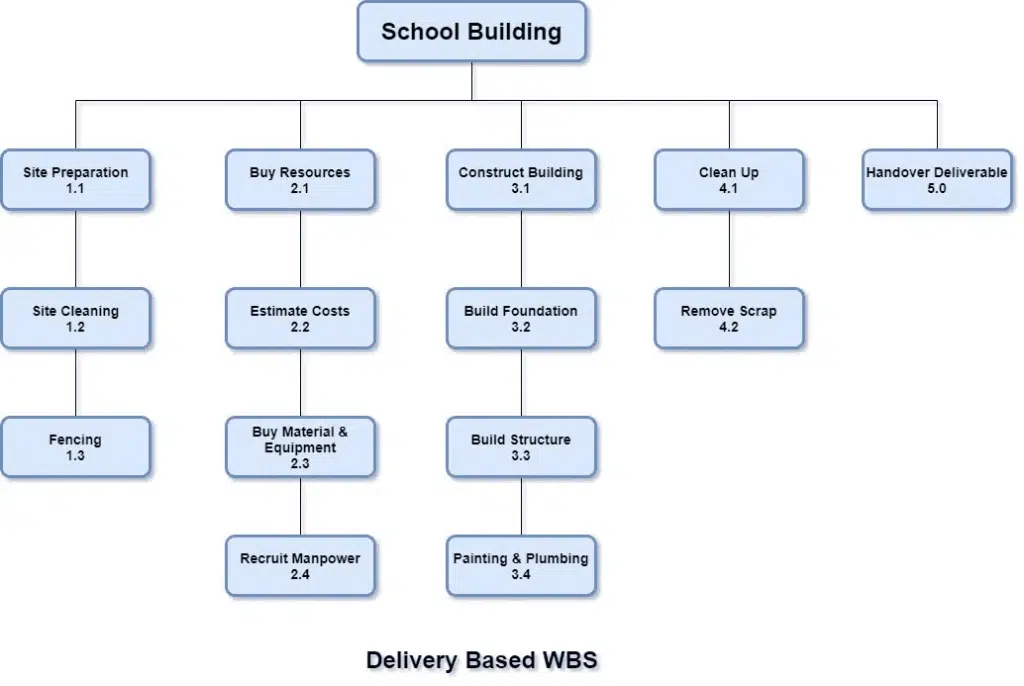
#2. Break the Work Packages to the Activity Level
The work package represents the very final level of the WBS. To compute the cost of the project, you must first disassemble the work packages into their respective activity levels. It is imperative that the activity level be one level lower than the work package level.
#3. Compile Activities, and Assign Resource
Compile the list of all activities, sequence them and find the task dependencies. This will help you identify the resources required to complete the project. Now you can add resources to each activity.
#4. Find the Duration and the Cost of Activities
After assigning resources to activities, you can easily find the duration and cost of each activity.
#5. Roll them Up to Get the Project Cost
You have a cost estimation for all project activities. You can now add them and get the total project cost.
Examples of Estimating Costs in Project Management
Here we will discuss two examples using analogous estimating and bottom-up estimating.
Example of Estimating Cost in Project Management Using Analogous Estimating
In this approach, you will compare your project to any previous projects that were comparable to it, locate the cost of the previous project, and then, based on this knowledge, you will make an educated prediction as to how much your current project will cost.
You can utilize this method if you need an estimation quickly or if there is insufficient time to create a full scope of work.
The degree of resemblance between the projects being estimated by analogy is directly proportional to the accuracy of the results. The budget would be more accurate if the project for which you need to estimate the costs and the project that you just completed were extremely comparable in terms of size, scope, and technical complexity.
For instance, you are given a project to construct a school building that would have 20 rooms, and you are tasked with immediately estimating how much money this project will cost.
You look into your organizational process assets and find a similar project where your organization builds a school with 40 classrooms. The cost of this project was 200,000 USD.
Based on this information, you guessed your project cost as 100,000 USD.
Example of Estimating Cost in Project Management Using Bottom-Up Estimating
This is the most time-consuming process to estimate costs in project management. In this method, you create the WBS, break it down to the activity level and find the cost of each activity; then, you add the cost of each activity and roll them up to get the total project cost.
Free Project Cost Estimation Template
You can use the following free template to estimate the cost of your project.
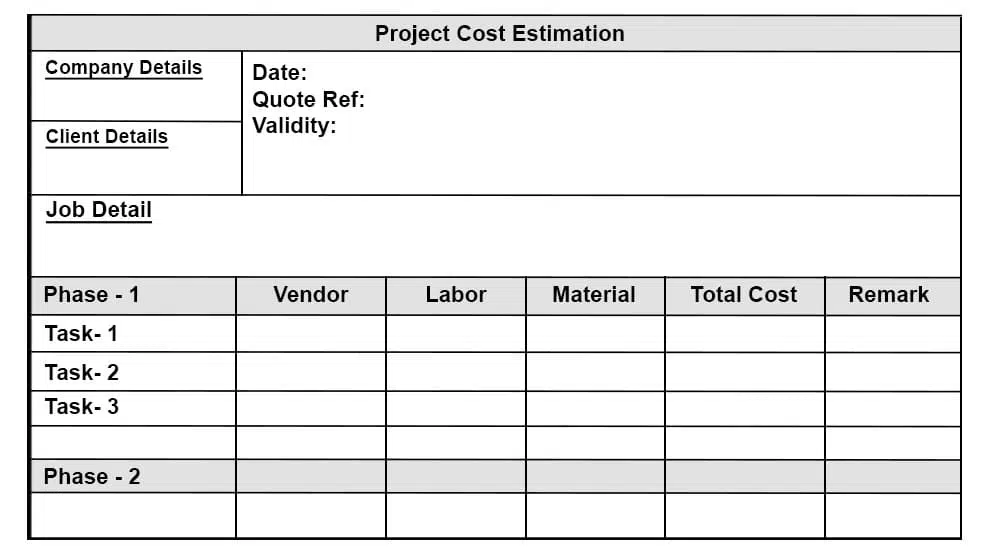
Roles of Stakeholders in Project Cost Estimations
- Project Sponsor: authorizes the budget and lays out a high-level schedule.
- Project Manager: responsible for the estimate, but not necessarily for estimating. The team helps them determine the project estimation.
- Portfolio and/or Program Managers: aggregate the project cost estimation across the projects within the portfolio or program.
- Estimators and Subject Matter Experts: responsible for estimating a specific activity in the project. Estimators and SMEs can be individuals or team members of the organization.
- Analysts: support the project team.
- Senior Management: high-level stakeholders who review and approve the project estimates.
Project Cost Estimation Techniques
You can divide cost estimation techniques into three groups:
- Quantitative
- Relative
- Qualitative
#1. Quantitative Project Cost Estimation Techniques
These methods involve analyzing data to produce an estimate of costs. When you don’t have enough information, don’t have enough experience, or are pressed for time, you can’t apply these strategies.
Analogous Estimation: you can use an analogous technique when you have limited information, but the project is similar to a previous one. This is useful, and management needs a quick estimation for a feasibility study.
Parametric Estimation: based on historical information of a similar project but uses mathematical equations, like the cost of painting per square foot.
Bottom-Up Estimation: provides the most accurate result, but you can only use this method when all project details are available. Here, you calculate every component and add them up to get a final estimate. The bottom-up estimates technique takes the longest time and resources.
#2. Relative Project Cost Estimation
Instead of being implemented at the level of the sprint backlog, this method is applied at the product backlog level.
When you don’t have much experience, data, or time to work with, the relative method of project cost estimation is the one to turn to. The ability of humans to compare things is utilized in this method of high-level estimation.
In this section, the members of the team compare the amount of effort that is required for the new tasks to the amount of effort that was required for the task that was just finished.
Affinity Grouping: In this technique, similar items are grouped. T-shirt sizing is the most commonly used. A specific item is estimated to be of size small, and it is compared to the next item. If larger, you will group it as medium-sized.
Planning Poker: This method is frequently employed in adaptive and agile estimations. It does this by applying a Fibonacci sequence to the process of determining the point value of an epic, feature, user story, or backlog item. Each user narrative will have its own set of cards, which will be accessible to all team members.
If there are any estimation deviations from multiple team members, the user story is re-discussed till they reach an agreement.
#3. Qualitative Project Cost Estimation Techniques
Some project elements are difficult to quantify. Qualitative estimates rely on understanding processes, behaviors, and conditions as individuals or groups perceive. This technique can be used along with quantitative methods when perceptions are crucial.
Expert Judgement: This is a judgment based on expertise in an application area, knowledge area, discipline, or industry.
Observation: Estimations sometimes can be based on observations (tacit knowledge).
Interviews: A formal or informal approach to extracting information from stakeholders can be used in estimations.
Surveys: A set of written questions designed to capture information from many respondents. This data is then used to formulate a common understanding of the estimates.
Conclusion
Estimating the costs of a project is an important step that will ultimately supply you with the project’s cost. The precision of this method is contingent upon the requisite conditions as well as the information that is at hand. Estimates of costs are regularly improved through iterative and adaptive approaches as the work on the project moves forward.

I am Mohammad Fahad Usmani, B.E. PMP, PMI-RMP. I have been blogging on project management topics since 2011. To date, thousands of professionals have passed the PMP exam using my resources.


